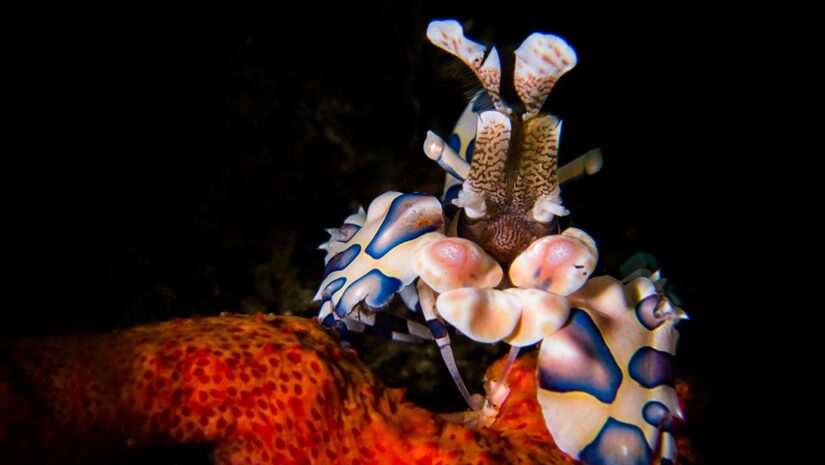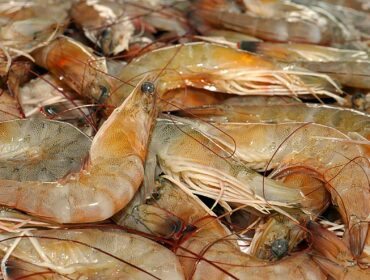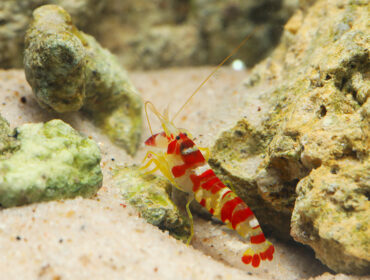The sight of a harlequin shrimp can bring a crowd of staring humans, enchanted by their vibrant, almost psychedelic appearance. But the harlequin shrimp apparently isn’t aware of its beauty, because instead of carrying on an act for the masses, it is just business as usual. Although they are favored by aquarium enthusiasts, the creature in the wild is an elusive character with a quiet agenda: hunting starfish.
What is a harlequin shrimp?
There are two types of harlequin shrimp. Hymenocera elegans is native to the Indo-Pacific region, while hymenocera picta are specific to Hawaii.
Habitat
They are reef dwellers, preferring water temperatures of 72 – 78 degrees Fahrenheit, and are especially partial to a structure with spaces for them to retreat into, like branched corals or rock formations.

Body Composition
Their eyes are positioned on stalks, and they have two giant flat claws that serve as snipping tools while harvesting their prey. Females are generally larger than males.
Harlequin shrimp are white to a light pink in color, with splashes of bright colored spots on their entire body, usually red, purple, orange, and blue. They only grow to be 1 – 2 inches in length, but despite their size, have few natural predators. This is thanks to their markings and coloration; in the undersea world, bright patterns is a red flag to predators of toxicity. In addition, their coloration serves as a wonderful camouflage when amidst sea plants or corals, mimicking the bright lights and shadows produced by the overhead sun.
Diet
What’s curious about the harlequin shrimp is their exclusive predation of starfish. Some have been observed munching on sea urchins, but generally speaking, it is the starfish they are after.
The harlequin shrimp has two flat antennae that are used for detecting the scent of starfish prey. They will often be found in mating pairs, and will work together to overtake and devour their prey. One shrimp will use its claws to clip the soft tube feet attaching the starfish to its surface, while the other then pulls the starfish away from the surface and onto its back. Some shrimp will then drag the starfish to its lair, and feed on its tube feet and soft tissues. Unable to right itself, the starfish will then endure being eaten alive for a period of days to weeks, depending on the size of the starfish. Harlequin shrimp have been observed feeding the starfish to keep it alive for their consumption.

Life Span
Harlequin shrimp mate for life, and are fiercely protective of their family territory. Once the pair finds a suitable home within the reef, they are known to stay within the area for months or even years. The pair mate after a female molts, and can produce anywhere from 100 to 5,000 eggs per breeding season. This would seem like a high rate of reproduction, but the high demand for harlequin shrimp in the aquarium trade has made them more rare in the wild.
Conservation
To add to this factor, the bleaching and destruction of coral reefs has a negative impact on their habitat, and the relationship between harlequin shrimp and coral reefs is most certainly symbiotic. Fortunately, much attention is being given to the conservation of coral reef systems, so perhaps this won’t be the final act for the harlequin shrimp!



